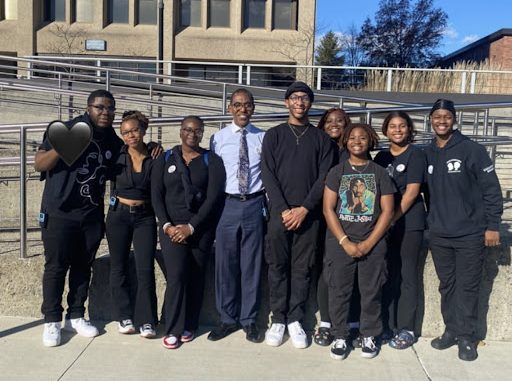
Black Solidarity Day is an event observed yearly on the first Monday of November. With Election Day directly following this event, Black Solidarity Day functions as a means of conversation, empowerment and community. The day was inspired by the play, “A Day of Absence,” which sheds light on the overlooked importance of African Americans in all parts of everyday life.
“A Day of Absence,” written by Douglas Turner Ward in 1965, comments on the often overlooked power of the African American population in America’s economic, political and social scenes. The play examines how everyday life would be altered if all the Black members of the small town, or more broadly, American society, randomly disappeared. Created right after the height of the Civil Rights Movement, “A Day of Absence” continues to prove its relevance and legacy each Black Solidarity Day.
Black Solidarity Day mimics the premise of the play by encouraging Black Americans to withdraw from society for a day. The day was initiated in 1969 by Dr. Carlos Russel, a former professor at Brooklyn College. Dr. Russel intended to provide African Americans with a day to unite, reflect and discuss voting strategies in order to combat the institutionalized racism and prejudice they faced. From that idea, the day expanded and grew into a more widespread event filled with public performances, events, community activities and activism. Black Solidarity Day is a day for conversations about the persisting racial inequalities and prejudice in America, and for illuminating how Black voices and lives are essential to the American identity.
When it comes to the SUNY New Paltz community, Black Solidarity Day has been observed since 1971, beginning two years after the tradition’s creation. As per the college’s academic policies and procedures regarding Black Solidarity Day, it is required that no tests, quizzes or graded material are assigned or due on the day. Additionally, students are to be excused from class if they notify their professors of their participation.
This year, the Black Student Union at SUNY New Paltz held two events in honor of Black Solidarity Day. The first was the pre-Black Solidarity Day Vigil at 5 p.m. on Sunday, Nov. 6. This vigil was held with the purpose of learning about the history of Shango Hall, with participants chanting and marching around campus. Discussions included racism in education systems, redirecting police funding to education and Black Lives Matter. The vigil is an important and more local aspect of Black Solidarity Day.
The following morning of Nov. 7, at 10:15 a.m., students and faculty loaded onto buses in Parking Lot 16 and were transported to the Newburgh Armory Unity Center. Attendees were asked to wear all black. Food, drinks and merchandise were provided.
During the day, different breakout sessions were offered to attendees. The organized activities were diverse, from waist bead making presented by the African Student Union to lectures about medical racism, presented by Multiracial United Students Empowered (MUSE) and the lasting impacts of colorism, presented by the Caribbean Latin Coalition.
Even if they couldn’t attend Monday’s events, students were encouraged to dress in all black and not purchase from businesses on this day. This was with the intention of maintaining solidarity on the day and emphasizing the day of absence.
The range of this day’s purpose and potential can thus be understood. Black Solidarity Day transcends any sort of rigid categorization. Important conversations about race, culture and experiences represented the intention of the event.
Because of the Black Student Union and the Black Studies Department at SUNY New Paltz, events such as the Black Solidarity Day Vigil and Day of Absence are made possible. The Black Student Union explained how annual events such as Black Solidarity Day are created and facilitated with the intention of bringing together individuals of all races, backgrounds and cultures. Days that recognize unity and coexistence while also dedicating concern and discourse to historically oppressed races and cultures are critical for a well-rounded campus community. The recognition of persistent systematic racism, empowering students of color and establishing a noticed presence of Black/POC individuals on the college campus continue to be necessary conversations in New Paltz.
